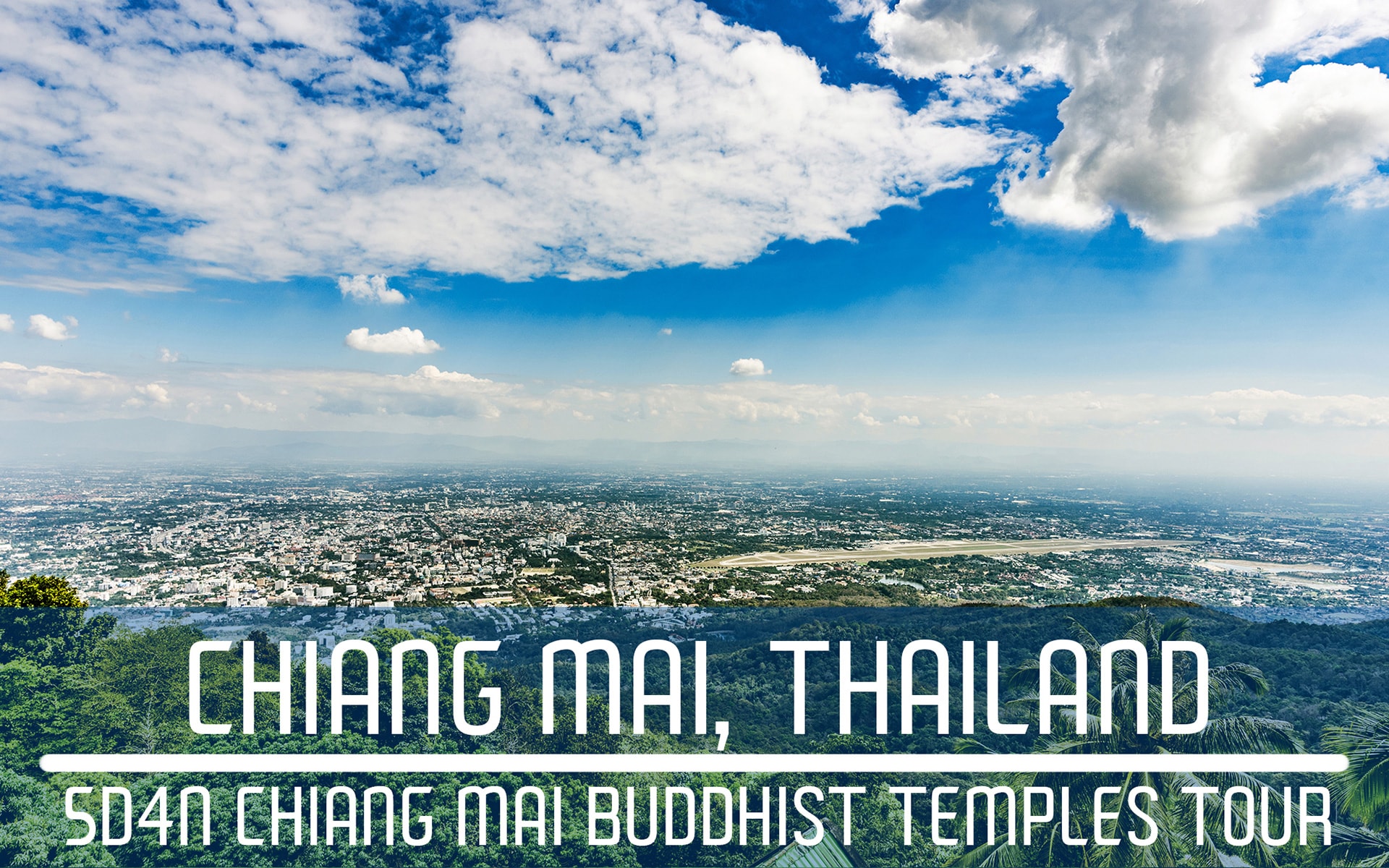
VISIT CHIANG MAI FOR A TASTE OF BUDDHIST HISTORY AND CULTURE!
Let us design for you a trip that will give you insights into the development of Buddhism in North Thailand. We will discuss with you the itinerary and off we go!
Sawadee Jao, not Krub or Ka is what you will hear when coming to Chiang Mai, Thailand’s second largest city after Bangkok. Chiang Mai has a long history as a former capital of the Kingdom of Lan Na before becoming part of Siam from the 18th century onwards.
The name Chiang Mai means “new city” denoting Chiang Mai’s origins back in 1296 (or 1294 depending on sources) when it replaced an even older city in the region. Since then, the rulers built many temples that both reflects their devotion to Buddhism and also the wealth and culture of the region.
Experience the merging of the past into the present in Chiang Mai where locals are proud of the city's more than 700-year history. Its rich Buddhism heritage, unique Buddhist art style and culture is a perfect foundation for the development of the city.
Chiang Mai is one of the few places in Thailand where it is possible to find in the heart of the city centuries-old chedis and temples next to modern convenience stores and boutique hotels. The original city layout still exists as a neat square surrounded by a moat with vestiges of the fortified wall and its four main gates offering prime access to the old town.
Chiang Mai is a city built on the roots of a traditional heritage that dig deep into the soil of time. It's a city with a beautiful cultural personality of its own. In addition, it's been blessed with much majestic beauty in nature. Join us on a tour of the city and the regions and learn about the Buddhist culture, history and architecture that are unique to this part of the world.
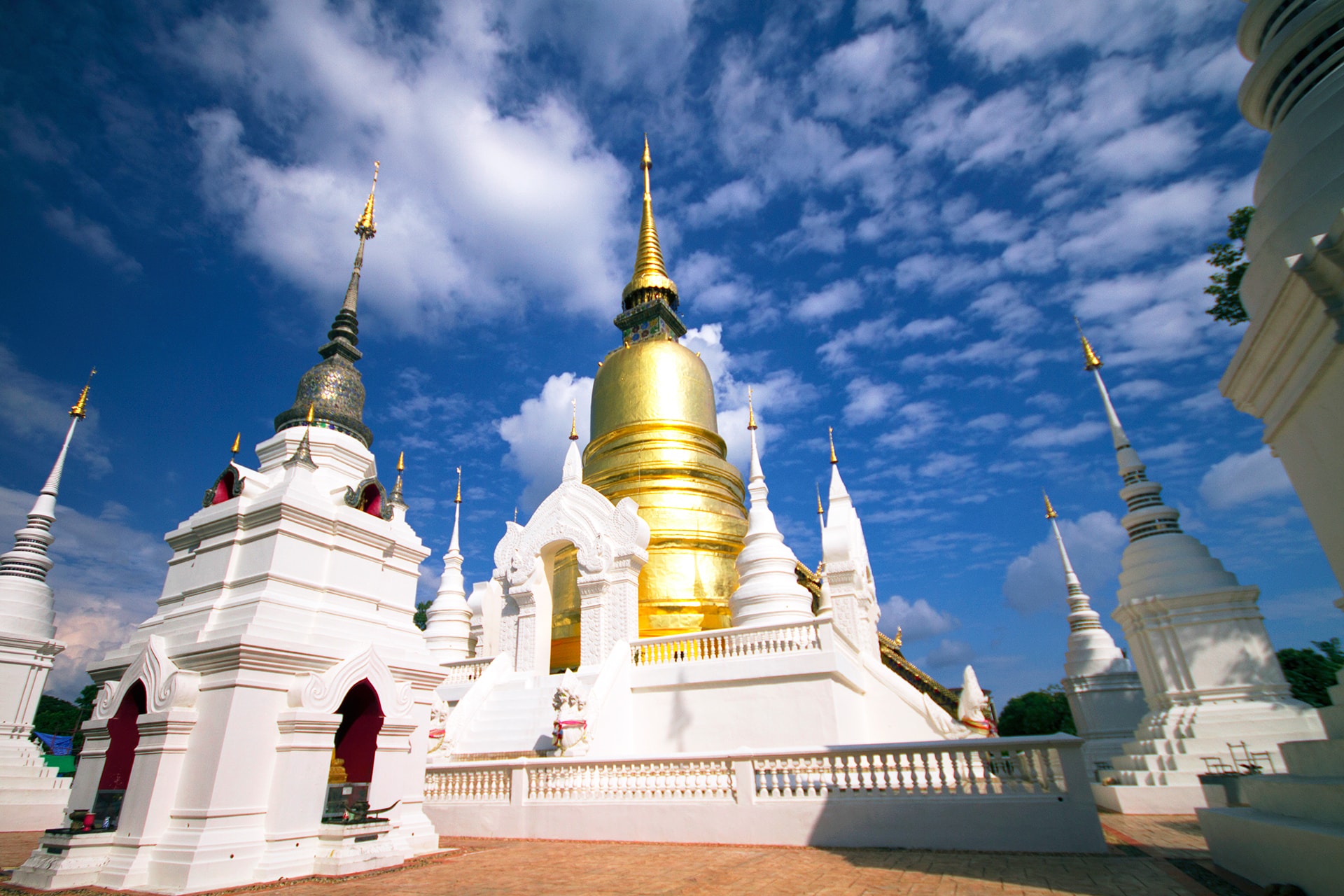
Wat Suan Dok
Wat Suan Dok has a close association with Wat Doi Suthep. Legends have it that a prominent monk from the Sukhothai Kingdom acquired a Buddha relic after having a vision. That same vision directed him to bring the relic to Chiang Mai to be housed. While waiting for the construction of the Wat Suan Dok to be completed to house the Buddha relic, the relic miraculously duplicated itself (or broke, depending on the versions of the legend). One relic was housed within Wat Suan Dok as planned while the other relic was placed on top of King Kuena’s elephant which carried the relic to its current location at Wat Doi Suthep.
Visitors approaching Wat Suan Dok will see the large 49 meter high bell shaped chedi which contained the fabled Buddha relic. East of the chedi is the sermon hall which was built early last century. Located within the temple grounds are also mausoleums housing ashes of the members of the royal family of Chiang Mai.
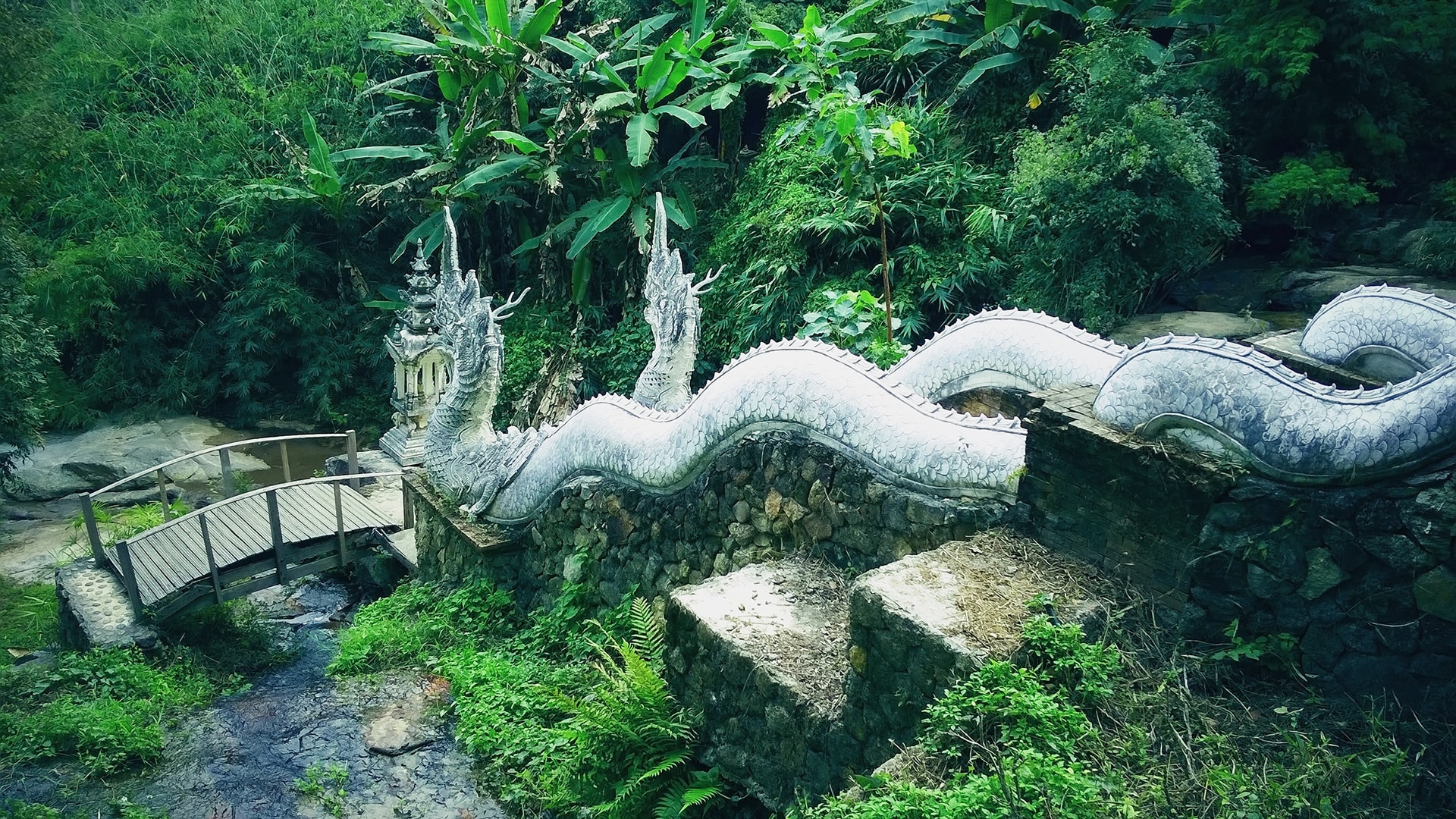
Wat Pa Lad Forest Temple
The road journey is somewhat steep and it can get warm, particularly at certain times of the year. Some visitors might want to pack insect repellents along for the trip. But this beautifully constructed temple is totally worth the trek.
Loosely translated as “Monastery at the Sloping Rock”, Wat Pa Lad Forest Temple’s origin is tied to that of Wat Doi Suthep. Around 1355, King Kuena’s white elephant rested at the current location of the Wat Pa Lad Temple during the elephant’s journey to Doi Suthep. King Kuena ordered the construction of Wat Pa Lad Temple to commemorate the elephant’s rest stop
Over time, the Wat Pa Lad became a stop for visitors making pilgrimage trips to Wat Doi Suthep, After a road was built in the 1930s, the place grew to become a monastic residence. Today, it also functions as a meditative retreat.
Visitors reaching the temple grounds will be stuck by the serene and nature-infused feel of the temple. Unlike most other temples which are built on cleared land, Wat Pa Lad gave the impression that the temple was built around nature. Two giant sphinxes greet visitors at the entrance and there are multiple structures and statues all over the temple grounds. Get to Wat Pa Lad to savour peace and serenity.
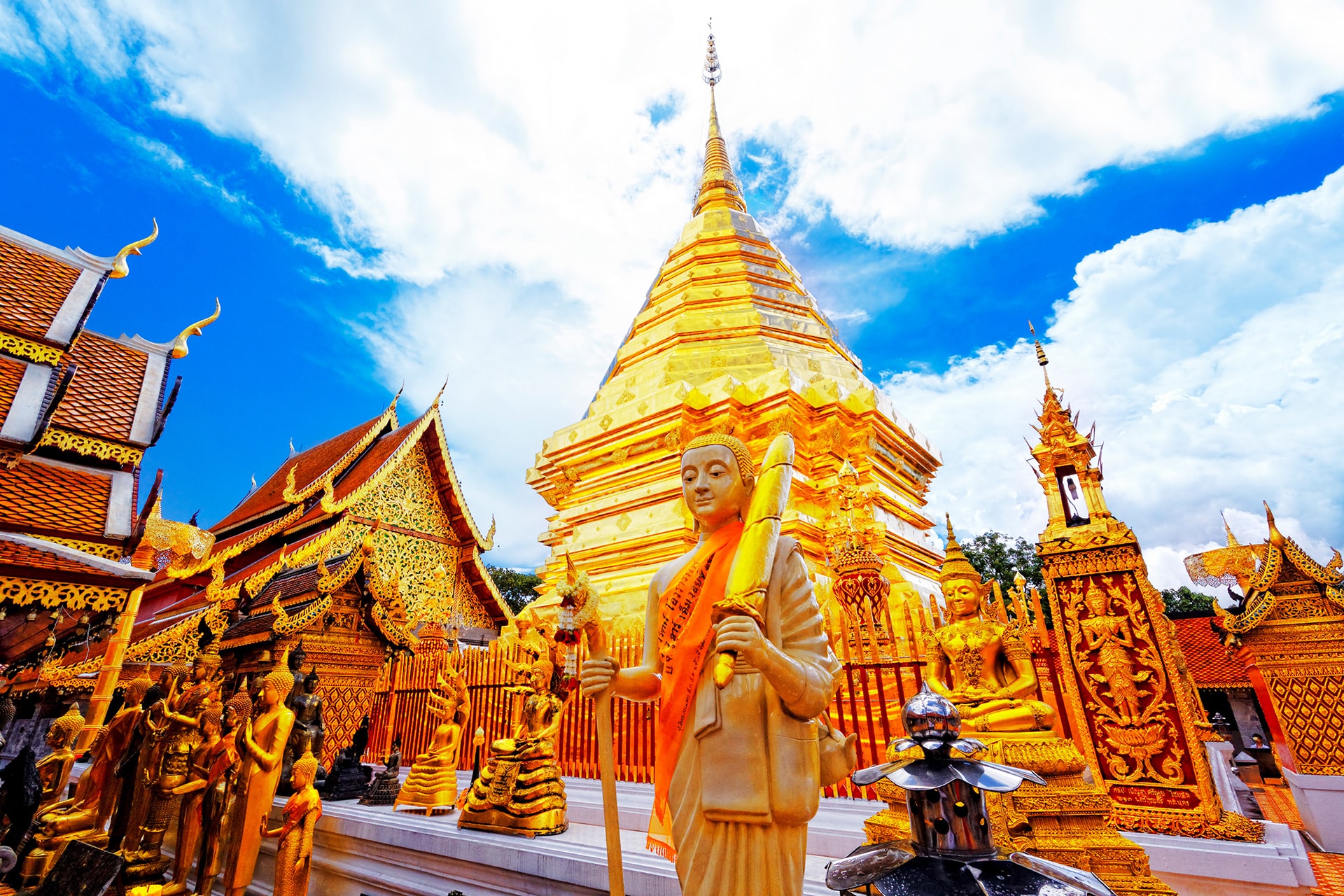
Wat Doi Suthep
School children in Chiang Mai are taught the story of how the white elephant carrying the relic to the mountain marks this important site in northern Thailand, the relic which now housed in the temple, Wat Doi Suthep.
Named after the mountain (Doi Suthep or Mount Suthep) that it sits on, Wat Doi Suthep is one of the most sacred sites in Chiang Mai. Renowned for its spirituality and excellent views of Chiang Mai from its premises, the temple enjoys strong patronage with large crowds from Thai and foreign pilgrims alike.
Constructed in 1383, Wat Doi Suthep still functions as a monastery today with monks living on site and practising Buddhism. Its origins story was rather amazing with legend stating a wandering monk visited Lan Na bearing the Buddha relic which broke into two (some legends said that the relic miraculously duplicated itself). One relic is housed within Wat Suan Dok while the other one is at Wat Doi Suthep.
King Kuena of Lan Na set about his white elephant to carry the Buddha relic to search for an ideal place to settle the relic. The elephant had an epic journey till it suddenly stopped and dropped dead! That spot was immediately decided to be location of a temple to house the Buddha relic.
Visitors to the temple will reach the base and make a decision to either walk the 306 steps to the entrance of the temple or take a tram for 20baht. Entering the temple, visitors will see important statues and shrines. Moving on to the second level, visitors will view the famous gold-plated chedi with many Lanna-style characteristics and styles. There is also a shrine dedicated to the fabled elephant. If the weather is fine, visitors will also get magnificent view of Chiang Mai city.
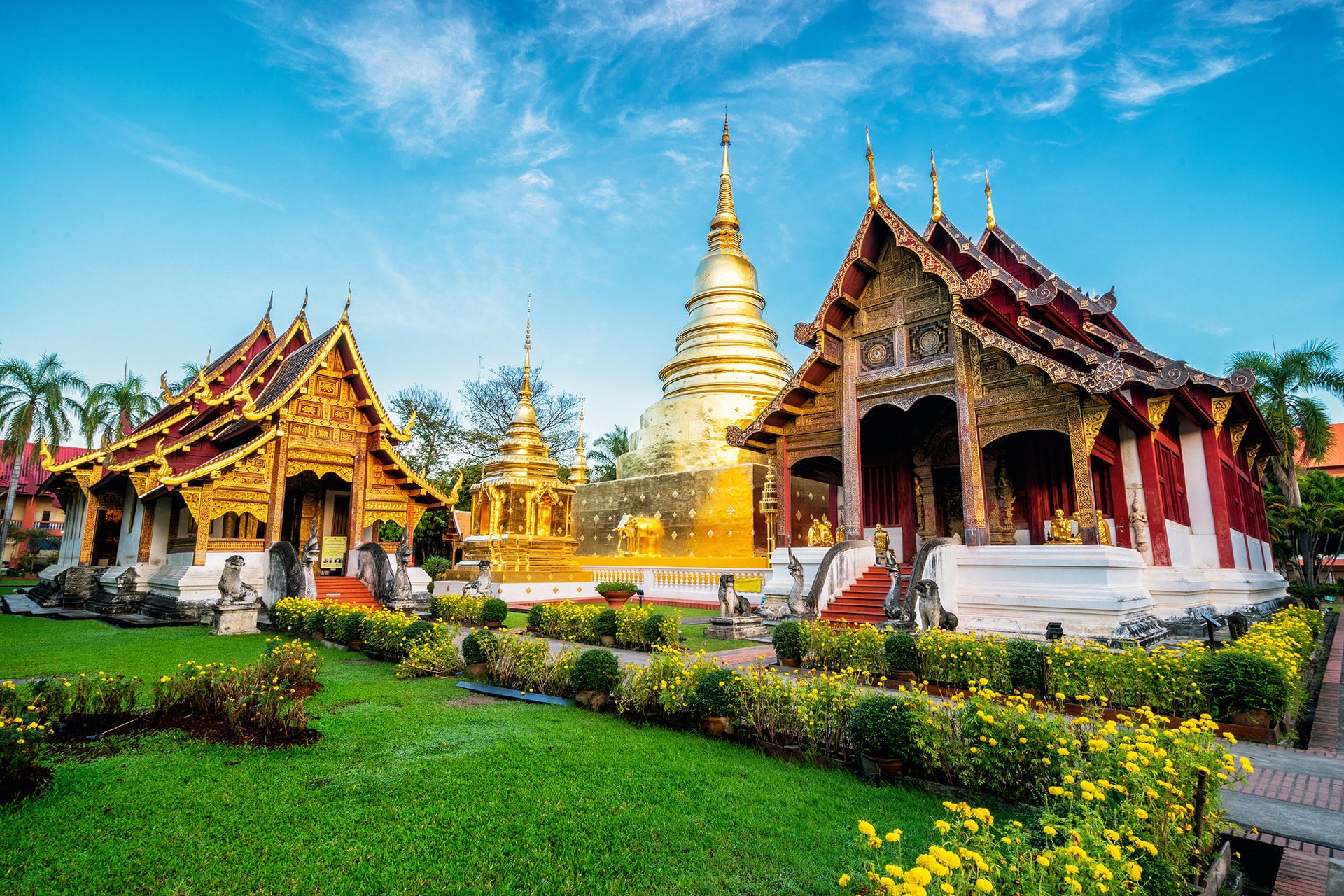
Wat Phra Singh
Home to Chiang Mai’s most revered Buddha image, Wat Phra Singh was built in 1345 by King Pa Yo in honour of his father and to house his father’s ashes. In 1367, the statue of Phra Buddha Sihing was brought to the temple and the temple was renamed Wat Phra Singh. However, it is not clear whether the sacred Phra Buddha Sihing image is the original as there are two other identical images in Nakhon Si Thammarat and Bangok.
The origins of the Phra Buddha Sihing are no longer clear due to the fog of history. However, legends pointed to Sri Lanka as a probable origin of the original image more than a thousand years ago and the statue was brought to the region as a gift or on a tour for viewing. Today, the benign look of the statue with the Buddha seated on top on a lotus throne with His hands in bhumisparsa mudra posture is a focal point during religious celebrations (including that of the Songkran Festival).
The temple is designed in Lanna-style architecture with three-tiered roofline and carved gables. The royal association of the temple can also be discerned from the garuda (the royal symbol) displayed near to the entrance.
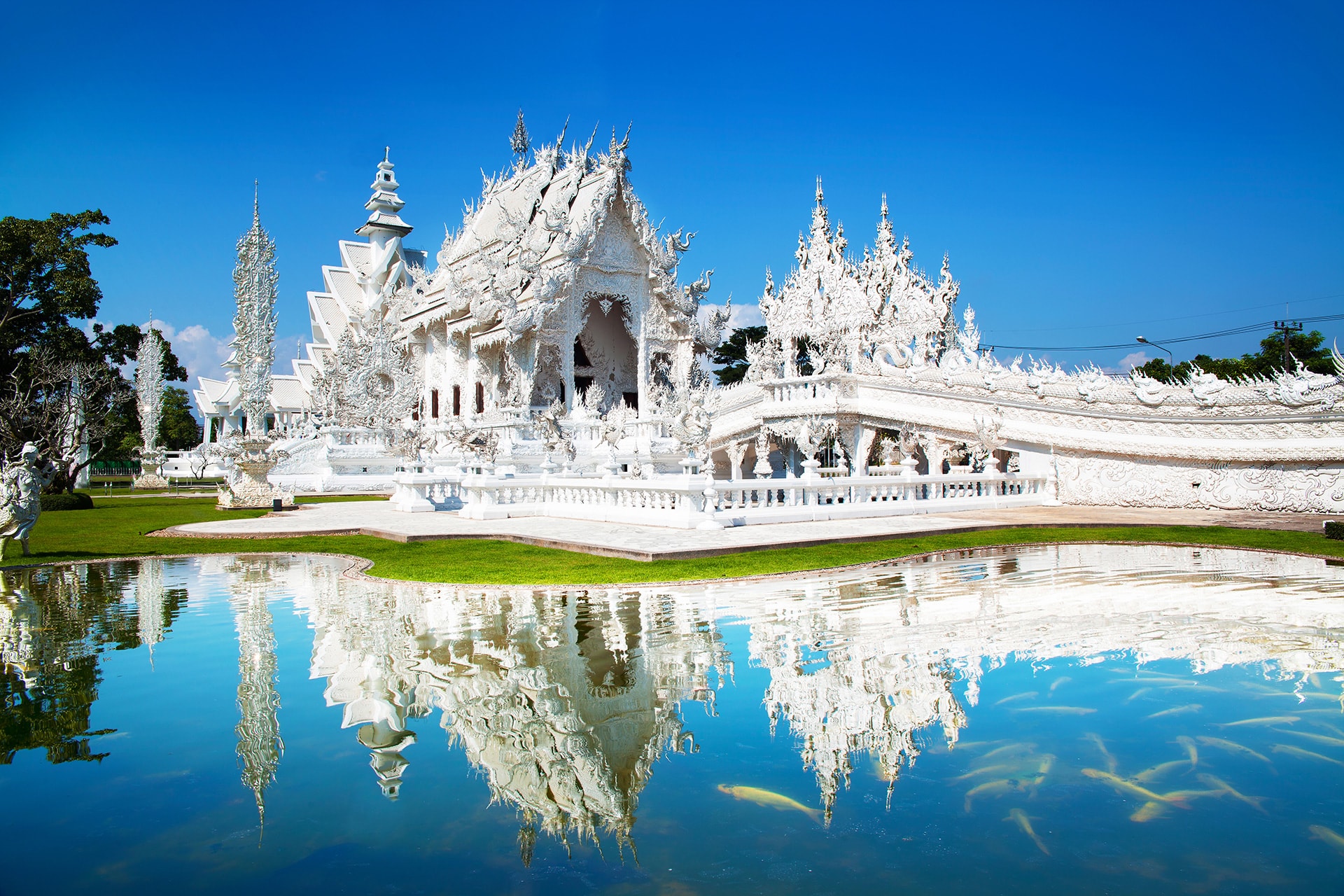
Wat Rong Khon
There’s nothing quite like it. Strange imageries mixed with traditional Thai designs. To top it off, the entire structure is in white! Welcome to Wat Rong Khon, also known in Chiang Mai as the White Temple. The life mission of artist - Chalermchai Kositpipat -, Wat Rong Khon gives visitors the sense of the bizarre and awe.
Located 15 km south of Chiang Mai, Wat Rong Khon was dilapidated till Kositpipat decided in 1997 to renovate and change the temple and its surroundings. Kositpipat funds the renovation work on his own (with contributions from gate receipts and donations) and engages a team of over 120 artists, craftsmen and construction workers. The artist expects the renovation and upgrading work to last at least 50 years so visitors should come back once in a while to check on new buildings!
The main structure of the Wat is the White Temple with two huge demons guarding the entrance while visitors step over grasping hands (signifying desire) while crossing a small bridge to enter the main hall. Symbolism abound throughout the property with its peculiar mixture of popular culture (think Kungfu Panda or Spiderman) and Buddhist philosophies and Teachings.
The other interesting parts of the temple grounds are the golden building - a structure coloured in gold and housing restrooms - and the crematorium. The golden building is an interpretation of the inappropriateness of our worldly focus on desires and money. The crematorium is decorated with intricate designs to reiterate to the visitors the fleeting nature of life.
Like it or hate it, Wat Rong Khon is sure to evoke reactions from visitors. Opened daily with a small entrance fee (50 baht), visitors are expected to be modestly dressed and to take off shoes when entering the temple halls.
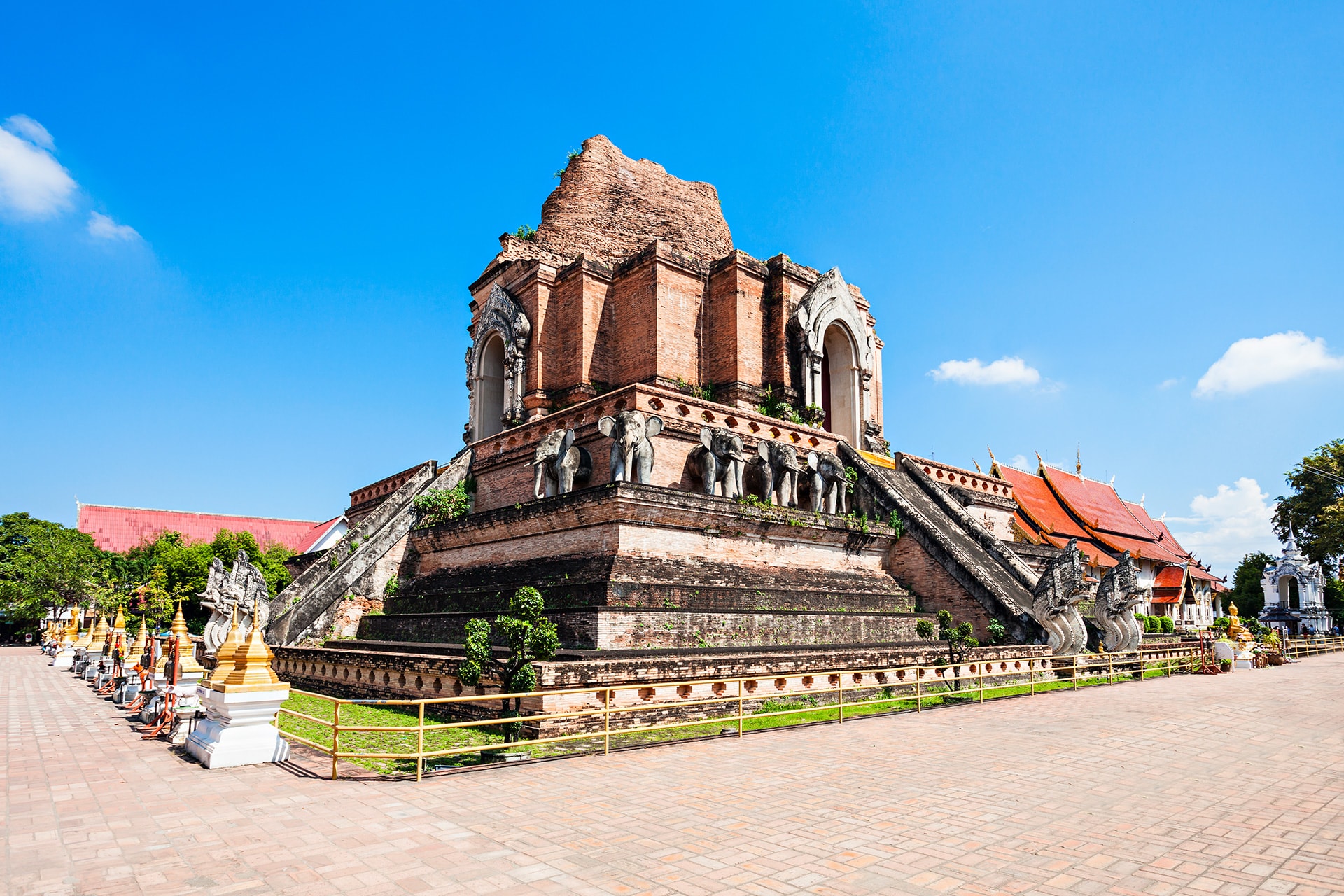
Wat Chedi Luang
Luang means “big” in northern dialect and Wat Chedi Luang was thought to be one of the tallest buildings from ancient Lanna era. Built around 1441, it was partially ruined through natural disasters and human activities (wars etc) before being restored under the auspices of UNESCO and the Japanese government. The restoration was not without controversy as some felt that the restoration work was not totally faithful to Lanna style architecture.
The Emerald Buddha was installed in the temple in the 1400s before being moved to Luang Prabang about 100 years later. 1995, during the 600th anniversary of the chedi, a replica of the Emerald Buddha was made from black jade and placed in the reconstructed eastern niche.
Located within the temple grounds are two new buildings built in Lanna style. Dedicated to Ajahn Mun Bhooretado, a former abbot and a founder of the Thai forest tradition of meditation, and Luang Ta Maha Bua, a disciple of Ajahn Mun, the two buildings gave visitors an idea of the more recent activities of the temple.
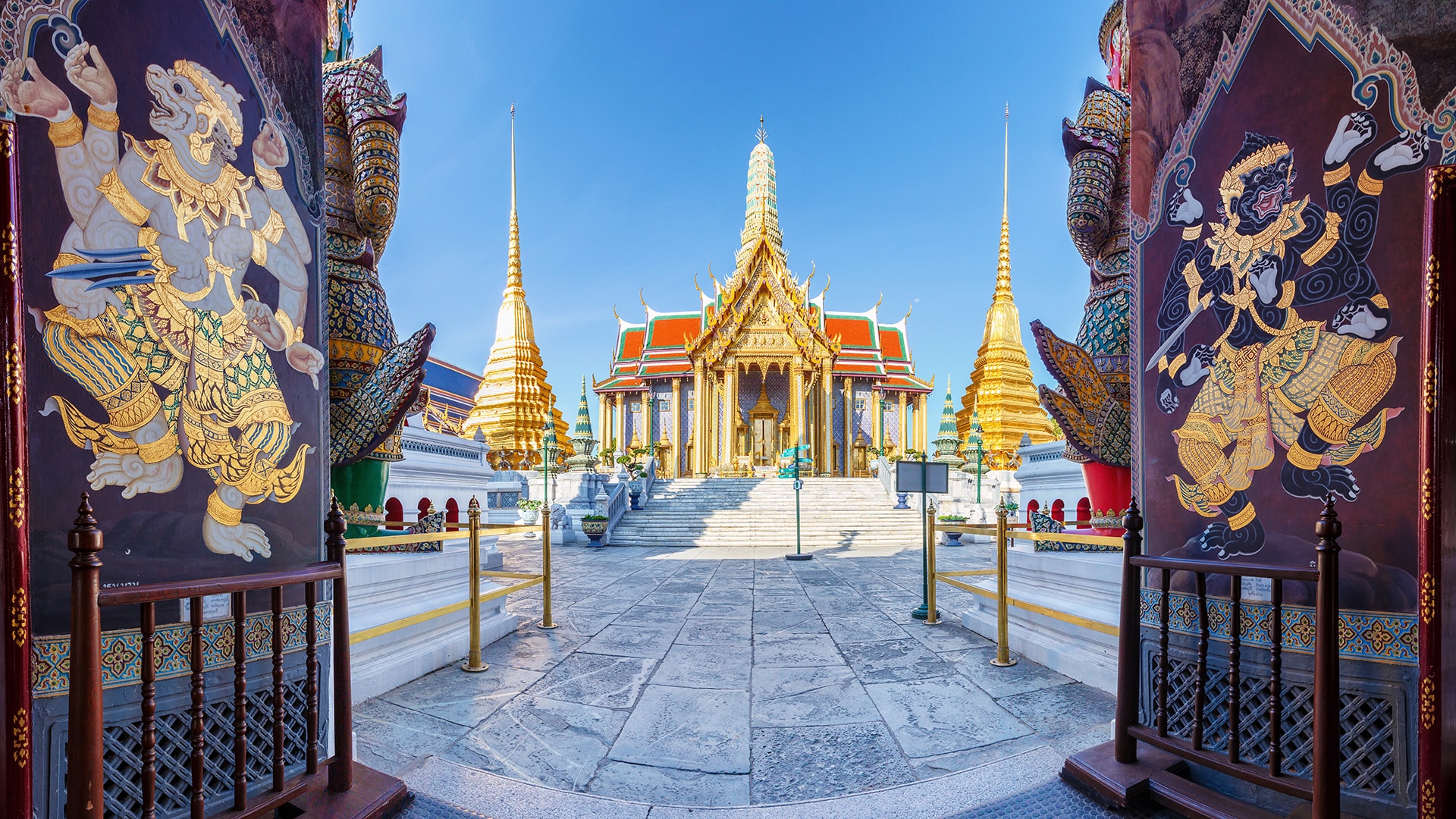
Wat Phra Kaew
Not to be confused with the Wat Phra Kaew in Bangkok, Wat Phra Kaew in Chiang Rai city is an important and revered temple in North Thailand. Originally named Wat Pa Yah after the dense yellow bamboo groves found locally, it was later renamed Wat Phra Kaew after a legend of a discovery of the Emerald Buddha.
Legends have it that during the 15th century, the chedi of the temple was stuck by lightning and broke apart to show a Buddha statue. The Buddha statue was later discovered to be made of green semi-precious stone. Thus the name of this temple.
In 1990, a new Phra Kaew Marakot (Emerald Buddha) was commissioned and installed in the Wat Phra Keow. The replica was made close in design but not exact, being 0.1cm shorter than the original in Bangkok.
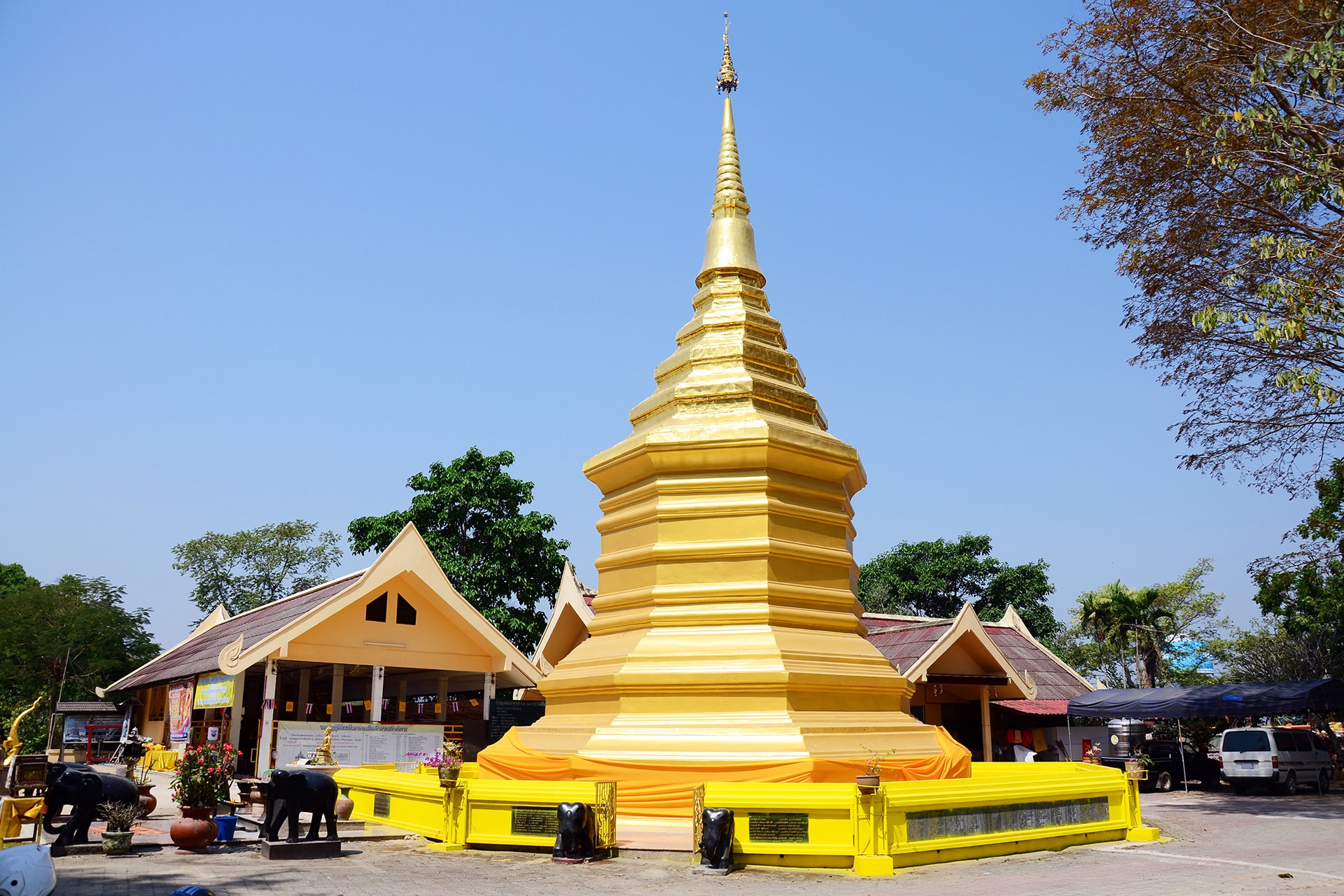
Wat Phra That Doi Chom Thong
Located 60km southwest of Chiang Mai is the Wat Phra That Si Chom Thong, a highly revered temple with a long history. Located within the temple grounds are two viharns (assembly halls). The largest viharn has a mondop on top of the building. The mondop is a square-shaped building with a pyramid roof.
Located within this mondop is a Buddha relic, believed to be part of the Buddha’s skull. The relic will be taken out during important Buddhist holidays and occasions to be displayed for devotees to worship.
The temple complex is an active temple with many monks living, studying and practising on temple grounds. Visitors are welcome to the Chom Thong Insight Meditation Centre where meditation classes are conducted in Thai and English.
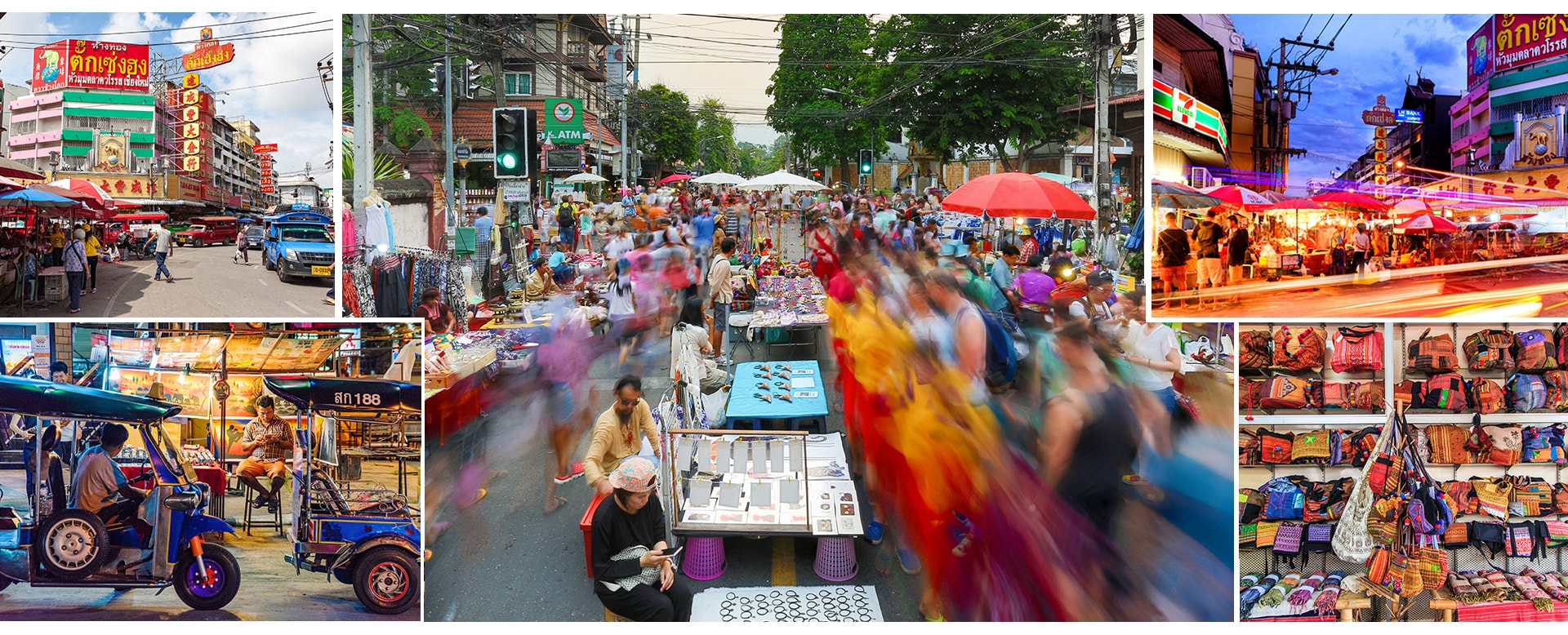
Customise your tour by telling us what else you want to do.
Let Kyle bring you on an unforgettable trip of Chiang Mai!
Talk to our travel representative for more information now!
< You may read about our Disclaimer, Privacy and Data Protection Policy, Terms & Conditions and FAQs here. >




